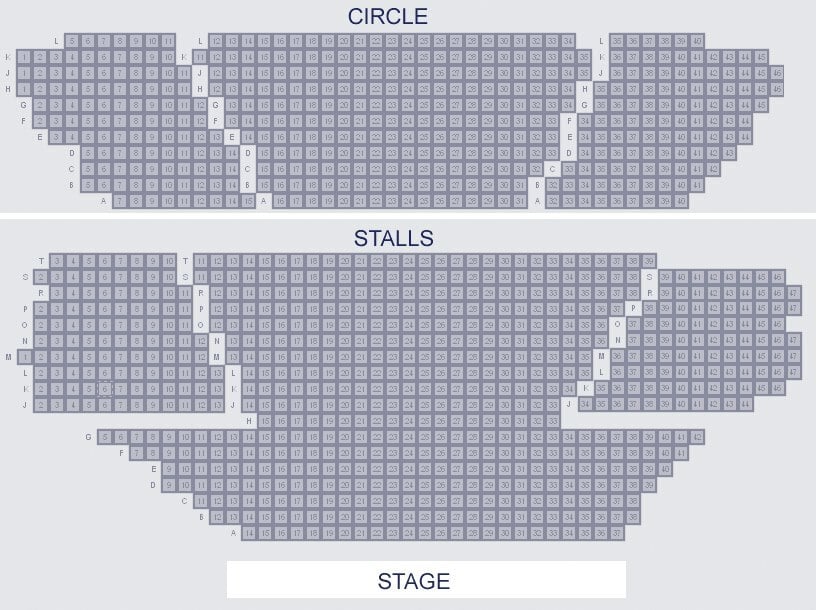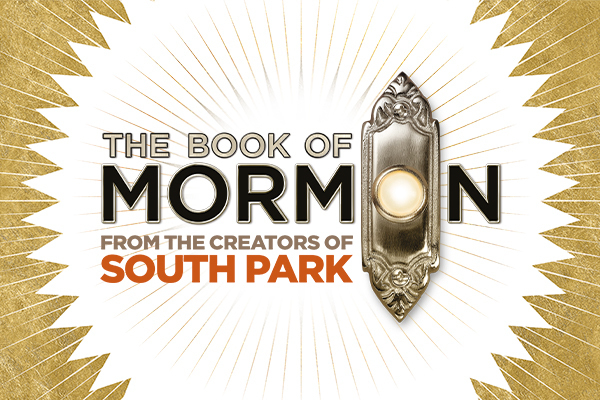Musical
Prince of Wales Theatre
Coventry Street, London W1D 6ASPrince of Wales Theatre Safety Policy
- Paperless or print at home tickets
- Cash free venue - contactless payments only
Tucked between Leicester Square and Piccadilly Circus, the Prince of Wales Theatre is one of the West End’s most iconic venues. First opened in 1884 and redesigned in striking Art Deco style in 1937, this landmark theatre now offers a sleek, contemporary space with over 1,100 seats. Owned by Sir Cameron Mackintosh, the Prince of Wales Theatre boasts state-of-the-art facilities and a prime location, making it a favourite among theatregoers in London.
The Prince of Wales Theatre London has hosted a string of West End classics and record-breaking shows, from Mamma Mia! to The Book of Mormon. With its blend of architectural heritage, modern comfort, and hit productions, the Prince of Wales Theatre continues to charm audiences from all over the world.
The History of Prince of Wales Theatre
The Prince of Wales Theatre opened in 1884 as the Prince’s Theatre before adopting its current name in honour of the future Edward VII. Its early years featured landmark productions like Dorothy and A Gaiety Girl, and in 1937, the venue was rebuilt in Art Deco style with a larger stage and capacity to meet modern demands.
The Prince of Wales Theatre London gained a reputation for risqué revues, star-studded variety shows, and long-running musicals including Aspects of Love and Mamma Mia!. In 2004, a major refurbishment brought new bars, a rebuilt auditorium, and a modernised exterior. Today, the Prince of Wales Theatre remains a vibrant part of London’s theatrical legacy. Find out where to sit with out handy Prince of Wales Theatre Best Seats Guide.
Where is Prince of Wales Theatre?
The Prince of Wales Theatre is located at Coventry Street, London W1D 6AS, just moments from Leicester Square and Piccadilly Circus. This central location places it within walking distance of top attractions, including Trafalgar Square and Soho.
Travelling to the theatre is simple, with excellent public transport links. Whether you’re arriving by Underground, bus, or train, the Prince of Wales Theatre is one of the most accessible venues in the West End.
Prince of Wales Theatre Nearest Tube
The Prince of Wales Theatre nearest tube stations are Piccadilly Circus (Bakerloo and Piccadilly lines) and Leicester Square (Northern and Piccadilly lines). Both are just a 2-3 minute walk away. Exit Piccadilly Circus via Coventry Street and you’ll find the theatre right ahead.
Prince of Wales Theatre Nearest Train Station
The nearest mainline train station to the Prince of Wales Theatre is Charing Cross. From there, it's a 10-minute walk or a short Tube journey via the Bakerloo line to Piccadilly Circus. You can also walk through Trafalgar Square and along Haymarket for a scenic route.
Buses to Prince of Wales Theatre
Several buses stop within easy reach of the theatre. Nearby stops on Coventry Street, Piccadilly Circus, and Regent Street serve day routes including the 14, 19, 38, and 453. Night services such as the N19, N38, and N97 also operate in the area. From these stops, the Prince of Wales Theatre is just a short walk away.
Prince of Wales Theatre Accessibility
The Prince of Wales Theatre offers step-free access from street to foyer and Stalls seating, with adapted toilets and spaces for wheelchair users. An infra-red system is also available for patrons with hearing difficulties.
Prince of Wales Theatre Safety Policy
The Prince of Wales Theatre follows all relevant health and safety guidance to ensure a safe, comfortable environment for all guests. Bag checks will be in operation, and patrons are encouraged to arrive early to allow time for security procedures.
Prince of Wales Theatre Dress Code
There is no official dress code at the Prince of Wales Theatre, but smart-casual attire is generally recommended. Some guests may choose to dress up a little for evening shows or special occasions, but comfort is key. Be sure to check out our dressing for the theatre guide to find out more.
Prince of Wales Theatre Notable Productions
Over the decades, the Prince of Wales Theatre has hosted standout productions including Funny Girl with Barbra Streisand, Aspects of Love, The Full Monty, and the original London run of Mamma Mia!, which broke records during its time at the venue.
Prince of Wales Theatre Recent Productions
Recent shows at the Prince of Wales Theatre include Let It Be, Rent, Fosse, and the long-running smash hit The Book of Mormon, which opened in 2013 and continues to draw packed houses.

The Prince of Wales Theatre Seating Plan
The Book of Mormon is the current production at Prince of Wales Theatre. The latest booking period for The Book of Mormon at Prince of Wales Theatre started 02/01/2023 00:00:00 and runs until 18/04/2026 19:30:00. Tickets for The Book of Mormon start at £23 and are available to book now.
The Prince of Wales Theatre is easy to access using public transportation. The nearest tube stations to the Prince of Wales Theatre are Piccadilly Circus (Bakerloo/Piccadilly Lines) and Leicester Square (Northern/ Piccadilly Lines)and Charing Cross Station (Bakerloo/Northern Lines). The nearest train station is Charing Cross Station. The Prince of Wales Theatre is serviced by bus lines 3, 6, 12, 14, 15, 22, 23, 38, 88, 94, 159, and 453. If you are driving to the Prince of Wales Theatre, the nearest car park is the Q-Park Chinatown.

